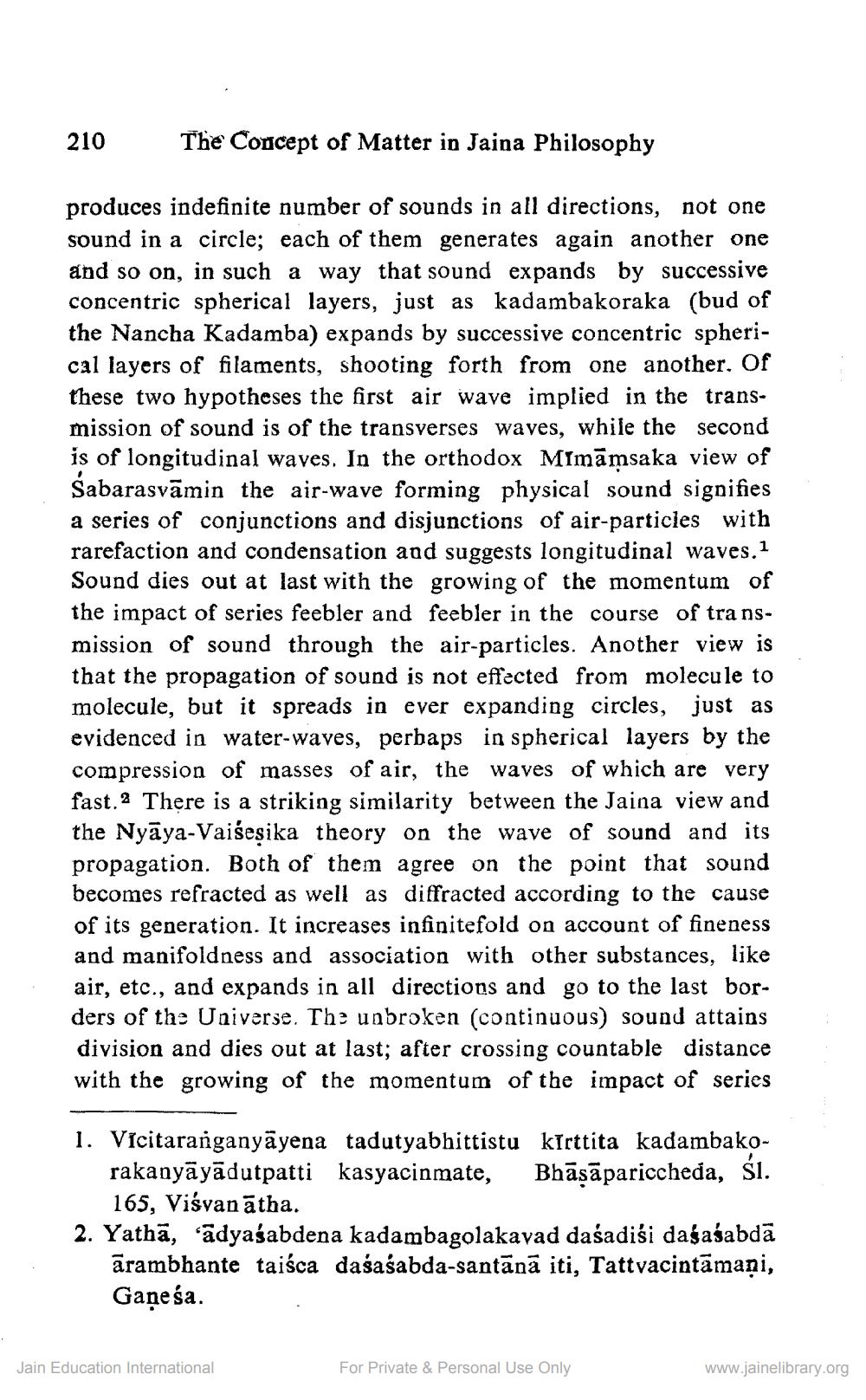________________
210
The Concept of Matter in Jaina Philosophy
produces indefinite number of sounds in all directions, not one sound in a circle; each of them generates again another one and so on, in such a way that sound expands by successive concentric spherical layers, just as kadambakoraka (bud of the Nancha Kadamba) expands by successive concentric spherical layers of filaments, shooting forth from one another. Of these two hypotheses the first air wave implied in the transmission of sound is of the transverses waves, while the second is of longitudinal waves. In the orthodox Mimāmsaka view of Sabarasvāmin the air-wave forming physical sound signifies a series of conjunctions and disjunctions of air-particles with rarefaction and condensation and suggests longitudinal waves. 1 Sound dies out at last with the growing of the momentum of the impact of series feebler and feebler in the course of transmission of sound through the air-particles. Another view is that the propagation of sound is not effected from molecule to molecule, but it spreads in ever expanding circles, just as evidenced in water-waves, perbaps in spherical layers by the compression of masses of air, the waves of which are very fast.2 There is a striking similarity between the Jaina view and the Nyāya-Vaišeșika theory on the wave of sound and its propagation. Both of them agree on the point that sound becomes refracted as well as diffracted according to the cause of its generation. It increases infinitefold on account of fineness and manifoldness and association with other substances, like air, etc., and expands in all directions and go to the last borders of the Universe. The unbroken (continuous sound attains division and dies out at last; after crossing countable distance with the growing of the momentum of the impact of series
1. Vícitaranganyāyena tadutyabhittistu kīrttita kadambako
rakanyāyādutpatti kasyacinmate, Bhāṣāpariccheda, Si.
165, Viśvanātha. 2. Yathā, “adyaśabdena kadambagolakavad daśadisi dasasabda
ārambhante taiśca daśaśabda-santānā iti, Tattvacintāmani, Gaṇeśa.
Jain Education International
For Private & Personal Use Only
www.jainelibrary.org




